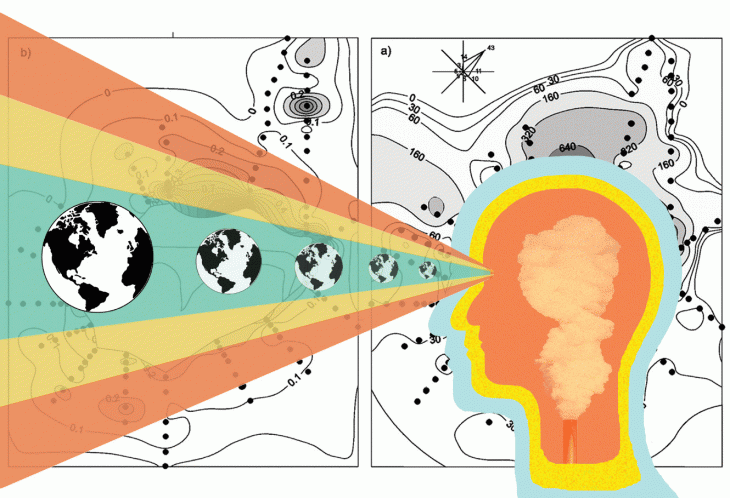No ; one cannot separate the building from the infrastructure of the city or the environment of the city. In my home town of Tehran there are examples of residential apartment buildings finished in white stucco. Given the fact that the city is highly polluted by carbon monoxide the buildings did not remain white for long. Read More
Category Archives: Economics of Sustainability
Economics of Sustainability
Nowadays in different areas of human being, economics has a great importance. It is every where.
Every thing what is around you is a part of a big complex economy system.
That is one of difference between human and animal. Is a complex system of relationships. And economy is one of that systems.What does it mean Economic system for Architects.
We can see that in different countries there are different economy conditions.
It influences on quality of food, water, fuel,etc. And It influences on buildings also.
For architects it is quiet important to think about economy. Because when you (Architect) starts to work about project, you start from research.
Research suggests that you exploring everything in live around your future project.
When you get information you start to think how can you build your project, and you should think about who much could it coast.
Obviously It is really important to understand that modern world is rapidly goes straight forward.
Like people trying to produce a new biological fuel, that would be better than petroleum.
People trying to develop an alternative to different kind of materials and things, because we cant use nature resуrves indefinitely and
most of a products that human produce now are really heartfull for a nature.
I understand Economics of Sustainability as complex of details that we should use when we design a building.
Imagine that you are design a small country house for someone. You should start from what kind of materials you will use.
It is better to use a local products. For example wood.
Next Is that 80% of sustainability achieved by the type of structure.
Of Course to save money on electricity it is important to think abou correct orientation of a building, by it is possible to increase quantity of a nature light.
All of the tips that you can use in design could help you to produce a better Sustainable situation around.
We should thing about it every time we sit down to work.
“ARCHITECTURE AS A WHOLE”
It is very tempting to seduce ourselves, as architects or as anybody keen on architecture or otherwise involved in the design process that the answer to our problems lies with buildings. Do you actually believe you can separate buildings out from the infrastructure of cities and mobility of transit and the expectations and incentives of people?
I would say, NO a building cannot exist in “Isolation”.
A building is very much “Context Driven” .
A building needs a good Infrastructure to thrive and live. Each one cannot co-exist without the other. We are living in times where our natural resources are depleting . We cannot afford the luxury of ignoring the environment and the urban fabric while designing buildings.
We shouldn’t approach designing buildings as just walls and roof but approach it like we are designing Eco-Systems.
Architecture has to be good understanding of a wide range of subjects from physical geography, through to social science, and an appreciation for disciplines, such as real estate development, urban economics, political economy and social theory.
Architects therefore need to consider a lot of parameters before constructing a building. The main task of architects is to incorporate the basic human consumption of these resources into our natural environment. There is a need for a solution for future development which doesn’t restrict us to the current lifestyle but improve it in a better way.
With an intelligent infrastructure the architect can thus save cost, time and money/respect the economy and the expectations and incentives of people ,providing them with a perfect environment to live in.
A sustainable project should improve way of life and make sense economically.
Why do people tend to believe that what is financially profitable (for developers) is not actually equivalent to economically feasible (positive impacts on social welfare)? How would you show that this does not necessarily have to be like this (but rather the opposite)?
Developers are only interested in what is financially profitable for them and think only about short term. The architect doesn’t typically choose a site for the developers; he is given the site and told to design accordingly. The way out of the damage causing the environment could be an sustainable and thoughtful, sustainable development. Hence sustainable development is about finding better ways of doing things, both for the future and the present. We might need to change the way we work and live now.Creating a sustainable architecture is one of the way. Having local materials for the building, considering the social need, with green and self-sufficient technology, collecting informations of the neighbor, etc can get along together. Think and act sustainable can join these two of approaches. It creates the best behavior for developing an architecture. This is a challenge for us as architects, or as the users.
Architecture for Humanity !
Architecture should be an integrated concept in the strategic planning from micro to macro level.The optimal development is the one that meets the needs of the present, without compromising the ability of future generations to meet their own needs that looks to balance different, and often competing, needs against an awareness of the environmental, social and economic limitations that we face as a society. Read More
Sustainable Urbanisation
During the last four and half decades, 5-6 million people have been added to urban India every year. The country has one of the largest urban systems with 289 million in 2001, which is projected to increase to around 605-618 million during 2021-2025. However, the key urban concern is the growing gap between demand and supply of basic services. While there has been a steady growth in the housing stock, infrastructure and services, the gaps between demand and supply have been rising, even in terms of conservative norms.



